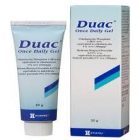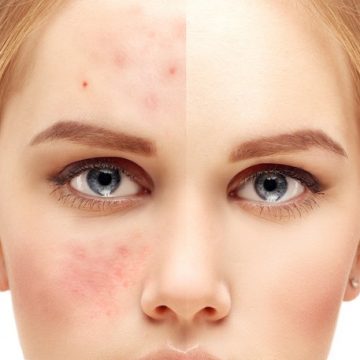Acne can be devastating for those who suffer from it. The skin condition can trigger emotional distress, along with scarring and long-term low confidence. Acne usually appears on your face, neck, chest, back and shoulders. It’s important that sufferers do everything they can to reduce the impact of this skin condition and understand how to treat acne.
What is acne?
Acne occurs when hair follicles become blocked by dead skin cells and oil from skin clog hair follicles and pores. When your body produces an excess amount of sebum and dead skin cells, this can build up in the hair follicles, and if the clogged pores becomes infected with bacteria, inflammation results.
Acne can be mild or severe – and is common among teenagers – with 70 to 87 percent reportedly suffering from acne. Acne is primarily driven by male hormones – these usually become active during the teenage years. However, it also affects most people at other stages in their lives.
Acne can be aggravated by the following:
• Fluctuating hormone levels during the menstrual cycle (for women)
• Certain clothing and headgear (including phones and headphones)
• Infecting the acne lesions, by picking them or rubbing dirt into them
• Certain weather conditions – such as high humidity
Symptoms of acne
Six main types of acne spots include:
• Nodules – big, painful lumps under the skin
• Papules – small, red bumps that are sore to touch
• Cysts – big lumps full of pus
• Whiteheads – closed, clogged up pores
• Blackheads – open clogged pores
• Pustules – pus-filled papules with a white tip
How to manage acne
Sometimes, basic self-help techniques can help to keep acne at bay. Here are a few tips:
• Regularly cleanse the infected area (lukewarm water is key)
• Avoid using make-up or cosmetics
• Immediately shower after a workout or exercise to stop sweat inflaming acne
• Take off all make up before bed
• Do not touch the area
How to treat acne
There are a range of different treatments to choose from, depending on the severity of your acne. The earlier you start treatment, the lower your risk of lasting physical and emotional damage from acne.
Here are some treatments on offer:
- Duac Once Daily Gel contains Clindamycin and Benzoyl Peroxide. Clindamycin is an antibiotic, which prevents the growth of bacteria involved in acne. Benzoyl Peroxide reduces blackheads and whiteheads.
- Differin – Differin targets acne by working at the cellular level to unclog pores. It’s also anti-inflammatory, which helps fight the redness and inflammation. It has fewer side-effects than tretinoin. Differin is for moderate to severe acne, and contains adapalene – which belongs to a group of medicines called retinoids. Differin is applied thinly over the affected areas once daily at bedtime. Avoid sensitive areas. You may not see results for up to eight weeks.
- Epiduo contains two active ingredients. Adapalene works by reducing growth of keratin cells that block pores. It also reduces inflammation and exfoliates the skin to smooth the surface. Benzoyl Peroxide works by breaking down keratin which sheds the top layer of the skin and also breaks down the comedones, as well as unblocking sebaceous glands.
- Isotrex – Isotrex Gel is a prescription-only acne treatment and contains the active ingredient isotretinoin, which is similar to Vitamin A. It works by helping the skin so blocked pores are less likely. The gel is specifically used to help young people who have gone through or are going through puberty and in adults. Isotretinoin is similar to the active ingredient tretinoin.
- Tretinoin (Treclin) – Treclin contains Tretinoin and an antibiotic known as Clindamycin. It limits that growth of bacteria associated with acne and is used to treat acne in young people going through puberty and in adults.
For more information about how to treat acne contact one of our friendly team.

